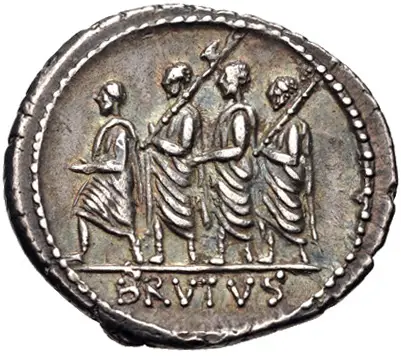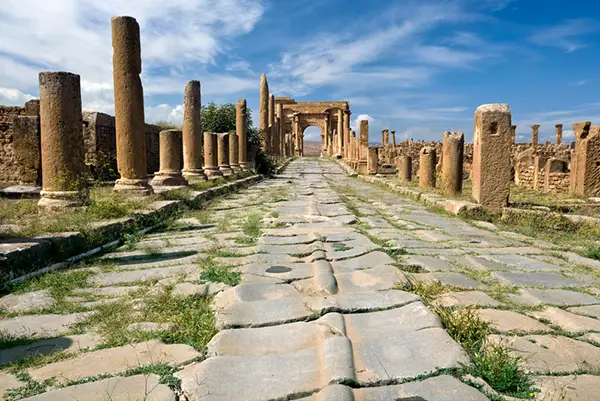The Roman Republic
The Roman Republic lasted for almost 500 years from 509 B.C.E. until 46 B.C.E. During this time period, the Roman Republic spanned most of the known world and had its most significant expansion of landholdings.
At times of war, their Roman Legions were fierce fighters that generally outmatched their opponents in numbers and weapons.

The Roman Republic was controlled by two Consuls and the Senate. The consuls were elected by Roman citizens and could serve a one year term, but they could run for office again if they chose.
The Senate was also selected by the citizens of Rome, but most of them held their title or position in the Senate for life.
At first, the Roman Republic was a vehicle for the wealthy families of Rome known as patricians. The Roman Republic also understood that the inclusion of ordinary people overtime was necessary for the republic to survive.
Over time the more unfortunate people gained a voice in government with the Plebeian’s Council or People’s Assembly.
Accomplishments of the Roman Republic
The Roman Republic was instrumental in understanding various cultures of the conquered lands they occupied.
For instance, the Roman Republic used many ideas from the ancient Greeks, such as architecture, science, laws, and the arts, from writing plays to singing songs.
The Roman Republic built aqueducts to supply water to cities. They constructed roads to move troops and help with trade. The Roman Republic even established thousands of bathhouses for the hygiene of the poor and wealthy.

They built buildings with running water and ships that rivaled their opponents in both warfare and trade. But perhaps the greatest accomplishment of the Roman Republic was their form of government.
The republic form of government is used today throughout the world by many countries in some fashion.
Expansion of the Roman Republic
During the days of the Roman Republic, ancient Rome grew in size. Not only the city itself but throughout Italy and the known world. Some of the greatest generals like Pompey, Scipio Africanus, Sulla, and Julius Caesar.
The generals fought numerous wars against people like the Celtics, Latins, Gallic, Greeks, Egyptians, Etruscans, and other barbarian tribes.
The Roman Republic was feared throughout the known world for its Roman Legions.
They conquered lands in North Africa, Hispania is also known as Iberia, Gaul, Syria, Macedonia, Asia Minor, and the whole peninsula of present-day Italy.
During the three Punic Wars against Carthage, they were instrumental in conquering and repelling numerous rebellions from the Carthaginians.
But they were also almost defeated by Hannibal during the Second Punic War. After the Punic Wars ended in 146 B.C.E., the Roman Republic became the most influential entity in the world.
Legacy of the Roman Republic
The legacy of the Roman Republic is still felt today around the world in many ways.
Their form of government, architectural advances, road building, the arts, and style of warfare has influenced Western Civilization for centuries and even millennials.
The legacy of the Roman Republic is not also good too.

Slaves were used extensively to propel the economy of ancient Rome.
This led to several civil and social wars. Poor people were encouraged to move to urban areas for employment, but the economies of the ancient cities could not survive the large influx of people.
Slums were created for the poor, and the rich, powerful patricians who ruled in the Senate grew their wealth over time.
Facts about the Roman Republic for Kids
- The Roman Republic lasted almost 500 years.
- The Roman Republic had a constitution and was led by Consuls, who were advised by the Senate.
- At first, the Roman Republic only allowed representation in government by the wealthier patrician families of ancient Rome.
- The Roman Republic adopted many cultures and ideas from the people they conquered.
- Eventually, poor or ordinary people known as plebeians gained the right of representation in the government.
- During the Roman Republic, ancient Rome experienced its greatest land expansion.
- The Roman Republic had many famous generals like Pompey, Scipio Africanus, Sulla, and Julius Caesar.
- The Roman Republic continues to influence the world today through its form of government, architecture, engineering skills, arts, and style of warfare.
Questions and Answers
- The Roman Republic lasted for almost how many years?
500 years
- Who were the leaders of the Roman Republic?
The Consuls and Senate
- What series of wars with Carthage ended with the Roman Republic being the strongest entity in the known world?
The Punic Wars
- What name was given to poor or ordinary residents in ancient Rome?
Plebeians
- The Roman Republic ended in what year?
46 B.C.E.



